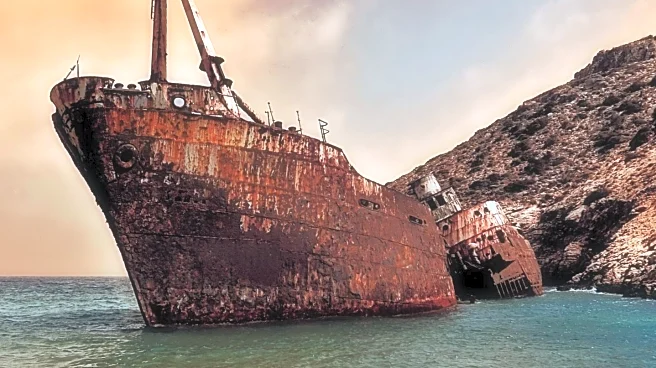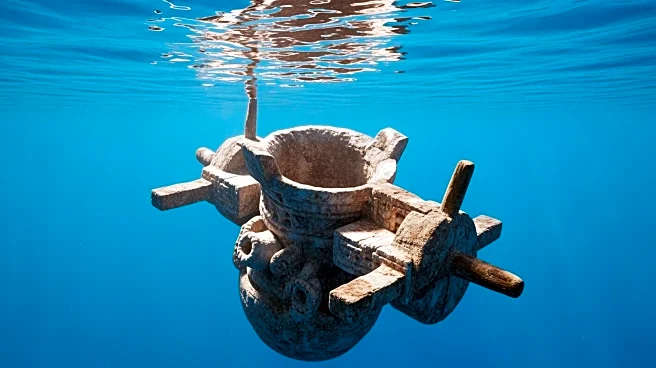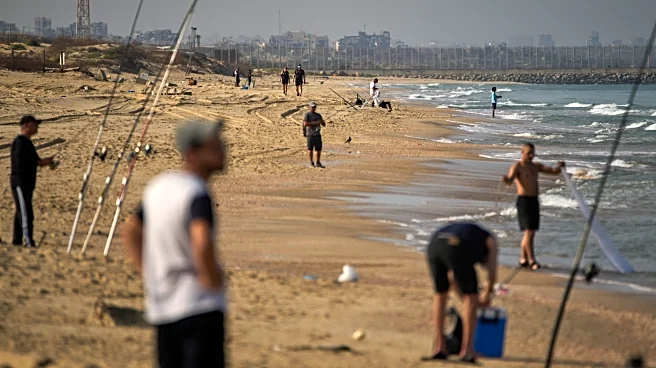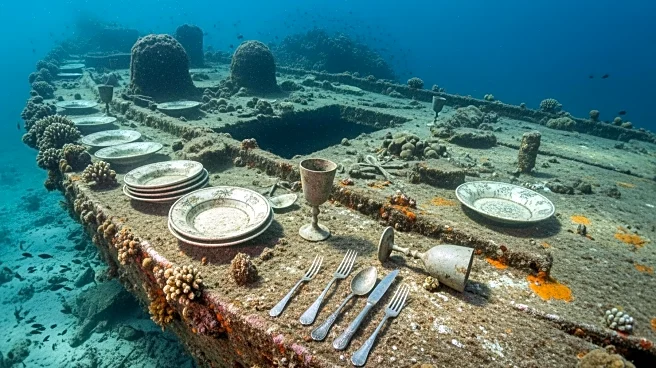What's Happening?
A team of divers led by Dr. Hakan Öniz from Akdeniz University has uncovered a 2,000-year-old Greco-Roman shipwreck off the coast of Adrasan, Antalya. The shipwreck, found at a depth of 120 to 150 feet, contains a cargo of Eastern Sigillata A ceramics,
a high-quality red-slipped tableware widely traded in the eastern Mediterranean during the first century BCE and CE. The ceramics were found in a well-preserved state, arranged in neat stacks, providing insights into ancient shipping practices and trade routes. The Turkish Ministry of Culture and Tourism highlights the significance of this find in understanding the commercial life and cultural exchanges of the time.
Why It's Important?
This discovery offers a rare glimpse into the maritime trade networks of the ancient world, particularly the eastern Mediterranean. The well-preserved ceramics allow researchers to study the economic and cultural landscape of the period, shedding light on trade practices and the movement of goods. The find also underscores the importance of preserving underwater cultural heritage, as the ceramics' condition is unusual for objects submerged for centuries. The artifacts will eventually be displayed in museums, enhancing public engagement with history and providing educational opportunities about ancient commerce and daily life.
What's Next?
Conservation efforts are underway to document and preserve the ceramics before further degradation occurs. The artifacts will be housed in the Bodrum Museum of Underwater Archaeology and potentially in a new Mediterranean Underwater Archaeology Museum planned for the Kemer Idyros region. These exhibitions aim to connect the public with the past, offering insights into ancient maritime trade and cultural interactions. The ongoing study of the ceramics will continue to inform researchers about ancient production hubs and trade routes, contributing to a deeper understanding of historical commerce.














